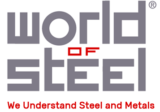Introduction of Electrical Steel
Introduction of Electrical Steel:
When a steel core is magnetized and then demagnetized, it absorbs energy (and heats up). Then a loss of power is happened. Electrical steels are designed to reduce this power loss. Electrical steels are also designed to have a high permeability. This means that the electrical current needed to produce the magnetism should be as low as possible.
Electrical steel, also called lamination steel, silicon electrical steel, silicon steel, relay steel or transformer steel, is specialty steel tailored to produce certain magnetic properties, such as a small hysteresis area and high permeability.Electrical steel is an iron alloy which may have from zero to 6.5% silicon (Si: 5Fe). Commercial alloys usually have silicon content up to 3.2% (higher concentrations usually provoke brittleness during cold rolling). Manganese and aluminum can be added up to 0.5%
The material is usually manufactured in the form of cold-rolled strips less than 2 mm thick. These strips are called laminations when stacked together to form a core. Electrical Steels are normally supplied in coils. Coils can be ordered slit to a width used most economically by the fabricator. Many fabricators have their own slitting or shearing equipment where volume warrants. This reduces the amount and variety of stock that must be carried in inventory.
PRODUCT DESCRIPTION
Magnetic cores for the wide range of modern electrical and electronic devices require magnetic materials with many combinations of properties and characteristics. Of all the soft magnetic core materials, the most widely used are known as electrical steels.
The purpose of this manual is to present only practical information that can be helpful in the selection and use of electrical steels. Major attention is focused on those that are used in wound or stacked magnetic cores for transformers, motors and allied apparatus operating primarily at 50 / 60 Hz.
Below Table lists the complete range of electrical steels.
AISI DESIGNATIONS
| Silicon Steel General Types | Grade AISI Designation |
| Non Oriented | |
| M-15 | |
| M-19 | |
| M-22 | |
| M-27 | |
| M-36 | |
| M-43 | |
| M-45 | |
| M-47 | |
| Oriented | |
| M-2 | |
| M-3 | |
| M-4 | |
| M-6 |
CLASSIFICATION OF ELECTRICAL STEELS
Because of their low carbon content, a more fitting metallurgical name for these materials would be iron-silicon alloys. However, the term electrical steels have been universally accepted as the designation for flat rolled magnetic materials in which silicon is the principal alloying element. Their electrical and magnetic characteristics make them well suited for laminated cores where the flux reverses direction or pulsates many times each second. There are several classes of electrical steels and grades within each class, suited for application in specific types of electrical apparatus.
GRADING BY CORE LOSS
For uniformity in specifying, producing, and purchasing, electrical Steels are primarily graded by core loss. This is because maximum permissible core loss usually is one of the most important considerations for cores of power frequency apparatus and for some electronic devices. Each electrical steel producer has an identifying trade name for each grade. This resulted in confusion for many years until the American Iron and Steel Institute (AISI) assigned a type number to each grade according to its core loss.
ASTM and International Standardizing Groups have other systems of identification. Core loss is the electrical power expended in the form of heat within the core of electrical equipment when those cores are subjected to alternating magnetizing force. This, of course, is incidental to the production of the desired magnetic flux. According to classic magnetic theory, core loss is considered to be composed of several types of loss. These are hysteresis loss, eddy current loss within individual laminations, and inter laminar losses that may arise if laminations are not sufficiently insulated from one another. Core loss and each of its elements are discussed more completely in subsequent sections.
TABLE: VARIATIONS OF DENSITY OF ELECTRICAL STEEL WITH SILICON AND ALUMINUM CONTENT
% Si + 1.7 X % Al |
Density Assumed by ASTM g/cm3 |
|---|---|
0.00 - 0.65 |
7.85 |
0.66 - 1.40 |
7.80 |
1.41 - 2.15 |
7.75 |
2.16 - 2.95 |
7.70 |
2.96 - 3.70 |
7.65 |
3.71 - 4.50 |
7.60 |
TABLE: THICKNESS CORRESPONDING TO ELECTRICAL STEEL STANDARD GAUGE NUMBERS (ESSG NO)
| ESSG No. | Inches | Millimetres |
|---|---|---|
| 29 | 0.014 | 0.36 |
| 26 | 0.0185 | 0.47 |
| 24 | 0.025 | 0.64 |
Properties of Electrical steel
- The hysteresis loss is low i.e. The magnetic domains get easily aligned in one or the other directions and not much of electrical energy is required for this process.(hysteresis graph on following slides)
- The magnetic permeability is high i.e. the material easily allows formation and accumulation of magnetic field within.
- Electrical resistance is high to prevent eddy current losses.(current that flows on the surface as a result of electromagnetic induction over the core coil)
Raw Material for Electrical Steel:-
- Ferro silicon alloy (15-90% Si) is the base material.
- The alloy is processed to lower the silicon content {3.5%} and remove constituents like Mn, S etc.
- Finally the density becomes around (7600+-50) kg/m3
